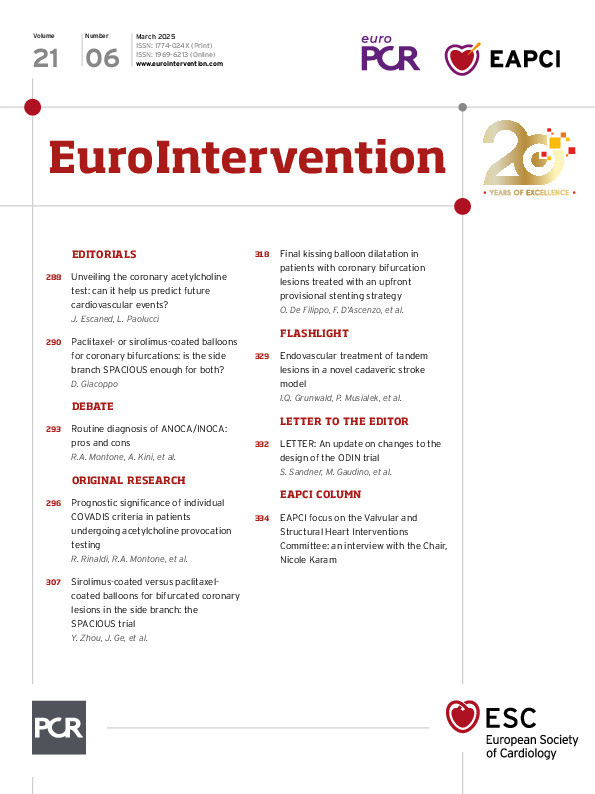Drug-coated balloon (DCB) angioplasty for treating the side branch was proposed several years ago12. While still ensuring the delivery of an antiproliferative medication to mitigate reactive post-percutaneous coronary intervention (PCI) neointimal proliferation, in comparison with drug-eluting stents (DES), side branch DCB angioplasty avoids a permanent metallic implant and may potentially reduce major stent-related complications, such as restenosis and thrombosis, particularly at the side branch ostium. In addition, a DCB-based strategy may help preserve the original bifurcation anatomy and reduce main branch stent strut deformation at the carina. Nevertheless, only a few, small, randomised trials assessing DCB angioplasty for coronary bifurcation disease have been conducted thus far, and, in the available trials, DCB angioplasty was employed in the context of combined interventional strategies and tested against heterogeneous comparators (Table 1).
Over the past decade, an increasing number of DCBs have been introduced, featuring differences in antiproliferative medications, excipients, and balloon catheters1. Accumulated data on DCBs and head-to-head comparisons have revealed no class effect, with some devices proving more effective than others34. In this regard, the...
Sign up for free!
Join us for free and access thousands of articles from EuroIntervention, as well as presentations, videos, cases from PCRonline.com

